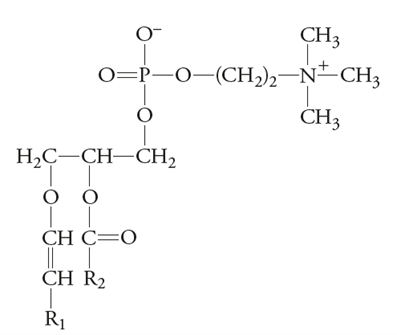A certain lipid has the structure shown below (R1 and R2 are fatty acyl chains). Could a sample of these molecules form a bilayer? Why or why not? (b) Would phospholipase A1 be able to use this molecule as a substrate? Why or why not?
A certain lipid has the structure shown below (R1 and R2 are fatty acyl chains). Could a sample of these molecules form a bilayer? Why or why not? (b) Would phospholipase A1 be able to use this molecule as a substrate? Why or why not?
Chapter5: Stereochemistry At Tetrahedral Centers
Section5.9: A Review Of Isomerism
Problem 21P
Related questions
Question
100%
(a) A certain lipid has the structure shown below (R1 and R2 are fatty acyl chains). Could a sample of these molecules form a bilayer? Why or why not?
(b) Would phospholipase A1 be able to use this molecule as a substrate? Why or why not?

Transcribed Image Text:O-
CH3
0=P-O-(CH2)2-N-CH3
CH3
H2C–CH–CH2
CH C=O
CH R2
R1
Expert Solution
This question has been solved!
Explore an expertly crafted, step-by-step solution for a thorough understanding of key concepts.
This is a popular solution!
Trending now
This is a popular solution!
Step by step
Solved in 2 steps

Knowledge Booster
Learn more about
Need a deep-dive on the concept behind this application? Look no further. Learn more about this topic, chemistry and related others by exploring similar questions and additional content below.Recommended textbooks for you


Organic Chemistry: A Guided Inquiry
Chemistry
ISBN:
9780618974122
Author:
Andrei Straumanis
Publisher:
Cengage Learning


Organic Chemistry: A Guided Inquiry
Chemistry
ISBN:
9780618974122
Author:
Andrei Straumanis
Publisher:
Cengage Learning